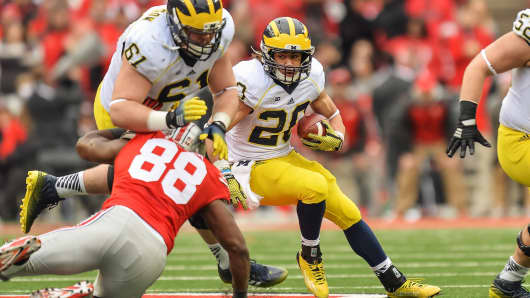The Nasdaq 100 is similarly numerically challenged. It has 109 members, including doubles for Google, Comcast, Discovery, and eight different stocks that start with the word "Liberty".
Most interesting is the Wilshire 5000, which makes the other indexes seem "pretty close" in comparison. As of the end of 2014, it had 3,827 stocks, far from its high of 7,562 in 1992 and low near 3,069 in 1971.
The "5,000 was made part of the name to convey the breath of the index's coverage," according to company documents.
The Dow Jones industrial average itself, although often called the "Dow 30" as a shorthand, has never had a number as part of its name. Originally it had only 12 stocks but grew gradually in the past century.
Like college sports conferences, so many of these index names are artifacts of history and don't actually reflect the true reality. The S&P 500, for example, could live up to its name just by losing five smaller companies.
It is the Big Ten of stock indexes, where the number is only a reminder of things that used to be. When a number meant something.





